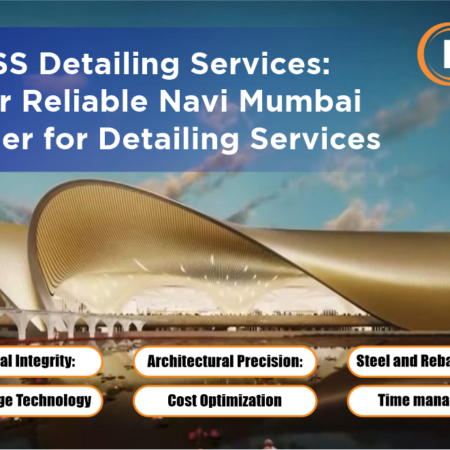Introduction
Bridges and infrastructure are the lifeblood of a country’s connection, allowing people and products to move freely and providing crucial transit linkages. Because of its scale, complexity, and significance, steel detailing for these structures necessitates a distinct set of concerns. We’ll dig into the specialised concerns involved in steel detailing for bridges and infrastructure in this blog, shining light on the main characteristics that distinguish these projects.
Specialized Considerations in Steel Detailing for Bridges and Infrastructure

Capacity to Bear Load: Bridges and infrastructure projects face significant loads, including automobile traffic, pedestrians, and, in some instances, trains. Steel detailing must consider the structure’s load-bearing capacity, ensuring it can safely withstand the anticipated traffic and environmental conditions. To ensure structural integrity, careful analysis and calculations are necessary.
Resistance to Corrosion: Many bridges, particularly those spanning bodies of water, endure harsh environmental conditions. Steel detailing demands corrosion-resistant coatings and materials to protect against the corrosive effects of moisture and salt. Proper maintenance and regular inspections also play a vital role in extending the structure’s lifespan.
Design and Aesthetics: Bridges often serve as landmarks or symbols of a location. Design considerations heavily influence steel detailing for bridges and infrastructure. The aesthetic aspect, encompassing material, color, and architectural features, is crucial for creating structures that seamlessly blend into their surroundings and enhance the place’s visual appeal.
Geotechnical Factors to Consider: The foundation of any bridge or infrastructure project holds immense importance. Detailed geotechnical investigations and soil analysis are required to determine the ground’s stability and make informed decisions about foundation design. The steel detailing process must align with these geotechnical findings to maintain the structure’s stability and safety.
Environmental Implications: As sustainability gains greater prominence in development, steel detailing for bridges and infrastructure must address the project’s environmental impact. These projects incorporate sustainable materials, energy-efficient design, and environmentally responsible construction practices.
Security Features: Prioritizing safety is a must in bridge and infrastructure design. Steel detailing includes elements such as guardrails, anti-slip surfaces, and lighting to ensure user safety, especially in adverse weather conditions. Diligent attention in this area can save lives and prevent accidents.
Materials Selection: The selection of steel and other construction materials is critical in bridge and infrastructure projects. Steel detailing considers factors such as steel strength, ductility, and durability, as well as material suitability for specific environmental conditions.
Observance of Regulations: Various safety, design, and environmental regulations govern bridges and infrastructure projects. Compliance with these requirements is essential to ensure the structure’s conformity and safety for public use.
Best Practices in Steel Detailing for Bridges and Infrastructure
The following recommended practices should be followed to achieve good steel detailing for bridges and infrastructure:
Collaboration: Encourage cooperation among steel detailers, engineers, architects, and other stakeholders to establish a comprehensive approach to project design.
Quality Control: Implement stringent quality control checks throughout the detailing process to identify and correct any possible faults early on.
Sustainability: Consider sustainable design and construction practices to reduce the project’s environmental effect.
Safety: Prioritize safety elements and follow safety rules to safeguard structure users.
Continuous Learning: Stay current on industry trends, technology, and materials to keep your projects at the cutting edge of innovation.
Conclusion
Steel detailing for bridges and structures is a highly specialized sector that necessitates a thorough grasp of engineering concepts, environmental concerns, and safety regulations. Steel detailing professionals may help to the effective design of structures that improve connection, safety, and sustainability in our communities by taking into account the particular problems and specialized considerations described in this article. These classic projects remain icons of innovation, engineering brilliance, and the important role they play in our everyday lives.



